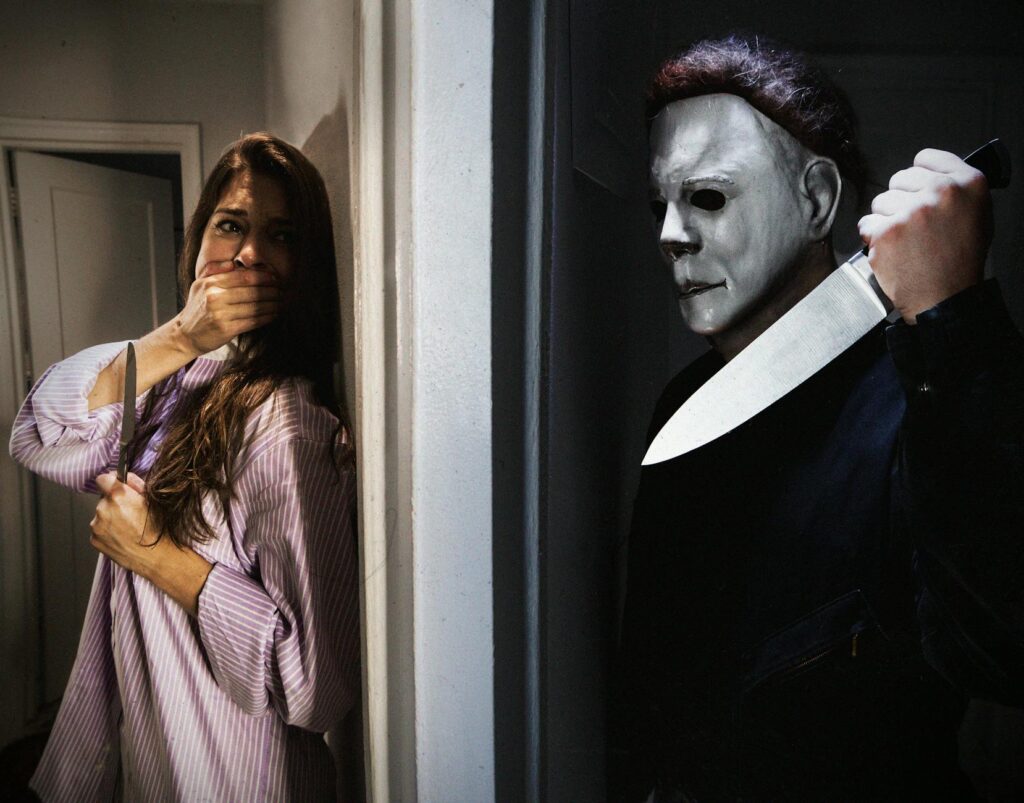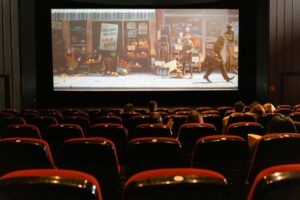Scary Movies
The world of horror cinema is vast and varied, encompassing…
The world of horror cinema is vast and varied, encompassing everything from slasher flicks to psychological thrillers and supernatural tales. Whether you’re a seasoned horror aficionado or a curious newcomer, there’s a terrifying experience waiting for you. This blog post will delve into the fascinating aspects of what makes a scary movie truly effective, exploring some iconic films and offering some insights into the genre’s enduring appeal.
The Evolution of the Slasher Film
The slasher subgenre, with its iconic masked killers and relentless pursuit of victims, has had a massive impact on horror. From the groundbreaking Halloween (1978) to the self-aware meta-commentary of recent films, the slasher has constantly evolved.  The psychology behind its effectiveness is a topic that continues to fascinate film scholars.
The psychology behind its effectiveness is a topic that continues to fascinate film scholars.
Psychological Horror: A Descent into Madness
Psychological horror often eschews jump scares in favor of slow-burn tension and unsettling atmosphere. Films like The Shining and The Silence of the Lambs masterfully manipulate the viewer’s mind, leaving a lasting sense of unease. [IMAGE_2_HERE] These films often explore the darkest corners of the human psyche, making them all the more terrifying. This approach allows for a deeper exploration of themes of paranoia and isolation.
The Supernatural and the Unseen
From classic ghost stories to modern demonic possessions, the supernatural realm provides endless opportunities for cinematic terror. The effectiveness of these films often lies in the ambiguity of the unseen, creating a sense of dread and uncertainty. [IMAGE_3_HERE] The use of sound design and subtle visuals is often key to building a truly frightening atmosphere, as seen in many examples of this genre. Consider exploring some of the most terrifying works on this excellent horror film website.
The Importance of Atmosphere and Setting
The setting of a horror film can be just as crucial as the plot itself. A desolate, isolated location can amplify feelings of vulnerability and paranoia. A claustrophobic environment can ratchet up tension and heighten the sense of inescapable dread. [IMAGE_4_HERE] Consider the impact of the settings in classics like The Texas Chain Saw Massacre or modern hits such as Get Out. The soundscape also contributes significantly to the overall impact.
Jump Scares: The Effective and the Ineffective
While some view jump scares as cheap tactics, when used effectively, they can be powerful tools in a filmmaker’s arsenal. However, overreliance on jump scares can often diminish the overall impact of a horror film. The most effective jump scares are often those that build suspense and anticipation beforehand. [IMAGE_5_HERE] A good example of effective jump scares is shown in the work of director James Wan, as discussed in this insightful article.
Found Footage and Immersive Horror
Found footage films aim to create a sense of realism and immediacy, often placing the viewer directly into the shoes of the terrified protagonist. This technique can be incredibly effective in building tension and suspense, but it can also be easily misused. The success of this style often rests upon the believability of the situation.
Modern Horror and Social Commentary
Modern horror often incorporates social commentary, exploring themes of inequality, trauma, and societal anxieties. Films like Get Out and The Babadook use the horror genre to examine and critique relevant social issues. This approach can add a layer of depth and complexity to the viewing experience. [IMAGE_6_HERE] You can find further information on this topic by checking out this academic article.
The Enduring Appeal of Horror
The enduring appeal of horror lies in its ability to tap into our deepest fears and anxieties, providing a safe space to confront these emotions vicariously. Whether it’s the thrill of the jump scare or the lingering unease of psychological horror, there’s something universally captivating about the genre’s power to unsettle and entertain. It allows us to confront our fears and understand the human condition in new and compelling ways.
Frequently Asked Questions
What makes a horror movie truly scary? The effectiveness of a horror movie often depends on a combination of factors, including atmosphere, suspense, psychological manipulation, and the skillful use of jump scares. It’s a multifaceted art.
Are jump scares essential for a good horror film? No, jump scares are not essential. Many excellent horror films rely on atmosphere, suspense, and psychological tension to create fear, rather than relying solely on jump scares.
Why are people drawn to horror movies? People are drawn to horror for a variety of reasons, including the thrill of the experience, the cathartic release of confronting fears, and the exploration of dark and taboo subjects in a safe environment.
What are some subgenres of horror? There are many subgenres, including slasher, psychological horror, supernatural horror, creature features, zombie movies, and found footage films.
What are some tips for enjoying horror movies? Watch with friends, ensure the viewing environment is comfortable, and be prepared for a bit of adrenaline!





